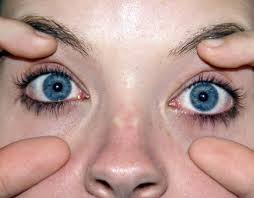Two ophthalmologists on Tuesday said children who stayed indoors most of the time were likely to develop myopia.
The ophthalmologists told the News Agency of Nigeria in Lagos that myopia could occur in children between ages four and 12.
They, however, said that the disorder could get better if detected early as they entered teenage and adulthood.
An online publication, American Optometric Association, defines myopia as “a vision condition in which close objects are seen clearly but objects farther away appear blurred.
The AOA said: “Also known as nearsightedness, it occurs if the eyeball is too long or the cornea, the clear front cover of the eye has too much curvature.
“As a result, the light entering the eye is not focused correctly and distant objects look blurred.”
Dr. Priscilla Yahere, an ophthalmologist at Spectrum Hospital, Lagos, said that the prevalence of myopia in children and young adults was on the increase.
Yahere said that there were no data to show the percentage of these categories of people in the society.
“We know that the disorder is very common and is becoming a public health problem as many children and young adults present it at the hospitals,” she said.
Yahere said that the causes of the disorder, which was on the increase, could be as a result of children staying too close to objects that were too bright for the eyes, such as television and computer.
She said that staying indoors for long hours could also be a cause, adding that the light outdoors were important for good eyesight.
She said: “Parents should encourage their children to play outdoors more often than staying indoors for hours.
“Nature has endowed us with the natural bright light that is good for the eyesight.”
Another doctor, Dr. Catherine Adegoke, said that the causes of myopia in children were usually genetic, adding that managing it could be difficult.
Adegoke said that it usually worsened throughout childhood and could only be corrected through the use of eye glasses.
She said that a child who had myopia would found it difficult to read an object from a distance of about three feet.
She said: “A normal vision should be about six metres away from an object.
“But, when you see a child who moves too close to an object like blackboard in school or television, such child has myopia.
“Other signs are when a child complains of constant headaches, fatigue or feeling heaviness in the eyes, such a child should be quickly attended to.”
Trending
- Nigeria moves closer to fresh census, Tinubu to set up committee
- Bodija explosion: Court refuses Oyo justice ministry’s application to take over prosecution
- Aiyedatiwa appoints Pa Fasoranti’s son as SSG, reappoints advisers
- ACF opposes VAT hike, submits recommendations to National Assembly
- Tinubu receives NIPSS report on digital economy, reaffirms commitment to youth empowerment, job creation
- NIDCOM boss hails Zuriel Oduwole’s nomination for 2025 Nobel Peace Prize
- UMA Ramadan Lecture: Hamzat urges clerics to relate preaching to society needs
- Breaking: Again, Multichoice hikes DStv, GOtv prices


